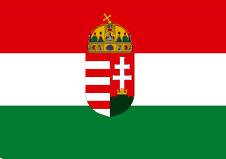Personal Appearance
Q. Can a personal appearance can be used defensively. >For instance, since personal appearances do not count as an action >would you be able to make a personal appearance in order to prevent a >player from cancelling the action? In other words, it would be a >preemptive strike. The rules say that you are not allowed to use one >personal appearance to cancel another (meaning to me that a canceling >personal appearance has already been announced by the opposing >player.) My reading of the rule is that it is meant to refer to a >situation in which: A would play an action, B would negate that >action with a personal appearance, and A would attempt to make their >own personal appearance to negate B's personal appearance. This is >clearly prohibited. In my scenario, however, A would take the action >and announce a personal appearance to prevent B from cancelling that >action with their own personal appearance. Would that be a valid >interpretation as the rules are written.
A. No, you can't do this.
Platform Speech
Q. Can a player make a Platform Speech against more than one party?
A. No.
Q. Are these the correct steps for making a Platform Speech?
1) Play the card
2) Declare the region
3) Declare the Party
4) Declare whether it is negative or positive
5) Roll the die & add the Modifier
5.5) Use a Personal Appearance to re-roll (If necessary)
6) Another player may cancel the platform speech with a personal appearance if step 5.5 was not used
A. Yes.
Constitutional Unionists advantage
Q. The rule states that at any time during regional or final polling in which a state in the Mid-Atlantic, Pacific West, or Upper South is tied and the Constitutional Unionists have at least 1 PCF in the state they AUTOMATICALLY gain enough PCF's to control the state. The lone caveat being Kentucky & Missouri (strongholds) and New Jersey (election law.) The example illustrated final polling where the Constitutional Unionist has 1 PCF and the Republicans and Northern Democrats had 2 PCF a piece in Delaware (meeting Delaware's PCR) and in the end the Constitutional Unionists automatically won because they met the above criteria.
Now that I spit out the rule, this is my question: The text of the rule seems to indicate that if this was the first regional polling that the the Constitutional Unionist would be able to add 2 PCF cubes to give them a total of 3 cubes. However the example (possibly because it is final polling) gives the impression that no extra PCF cubes are added and the Constitutional Unionists at the beginning of the next turn remain at 1 PCF in the state while the other two parties still have 2. So I guess my question is which interpretation is correct?
In the former it would seem as if residents of the state of Delaware just became disgusted with their party choices and voted for the Constitutional Unionists where in the latter it would seem as if they just stayed home on election day.
A. The former answer is correct.
Tokens
Q. I read the rules and other than the mention of them existing in the components, the rules do not speak to these. Just wondering if anyone knew what they were or were used for. Same goes with Republican ballot tokens.
A. The cards instruct the placement and use of tokens.
Locked States
Q. Once a state is locked the only way one could break into the state would be the play of an event correct (since card text supersede the rules)?
A. Yes, that's correct. A card would have to allow play in a locked state. However, at present (not ruling out the chance for additional cards to be added to the game at a later date), there is no card allowing such.
Cards
Q. Can players trade cards?
A. No.





